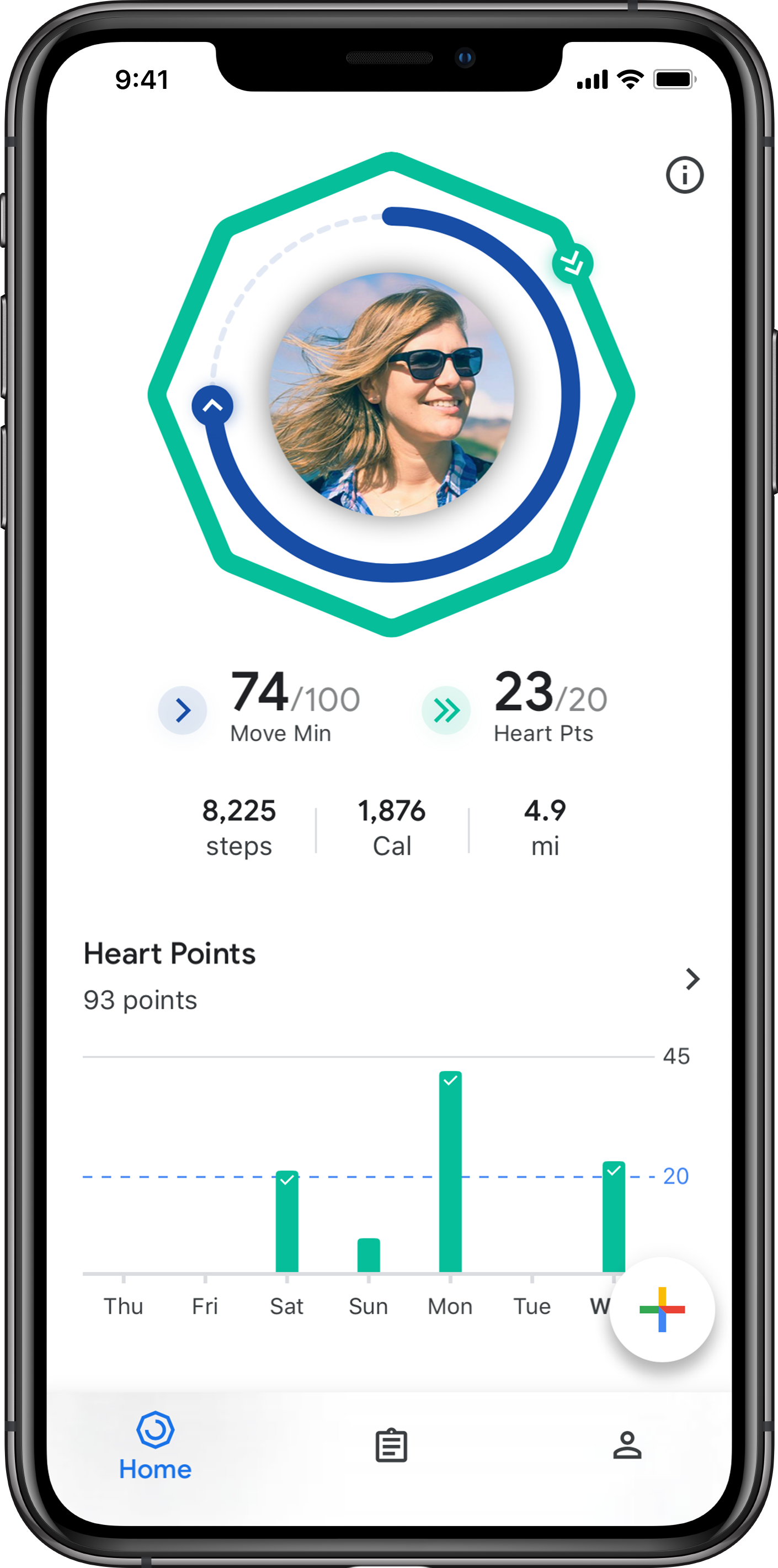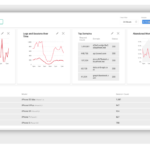Pinterest employee #1 launches blockchain art market MakersPlace
Pinterest is a great place to find digital art but a terrible place to sell it. The fact that anything online is infinitely copyable makes it tough for artists to establish a sense of scarcity necessary for their work to be perceived as valuable. Yash Nelapati saw this struggle up close as Pinterest’s first employee. Now he has started MakersPlace, where creators can generate a blockchain fingerprint for each of their artworks that proves who made it and lets it be sold as part of a limited edition.
Similar to Etsy, MakersPlace allows artists to sell their creations while the startup takes a 15 percent cut. Collectors receive a non-fungible cryptocurrency token connoting ownership of a limited-edition digital print of the artwork that they can store in their own crypto wallet or in one on MakersPlace. The MakersPlace site officially launches today after a year of beta testing.

“At Pinterest, we noticed that there are millions of digital creators that are spending countless hours creating digital artwork, but they struggle with basic things like attribution,” says MakersPlace co-founder Dannie Chu, who spent six years leading growth engineering at Pinterest. “Their work is getting printed, copied, shared and ultimately they make very little money from it being put online. If you can’t create a sustainable model for digital creators to create, you’re not going to have art.”
If software is eating art, Uncork Capital wants a seat at the dinner table. It has led a $2 million seed round for MakersPlace, joined by Draper Dragon Fund and Abstract Ventures, plus angels from Pinterest, Facebook, Zillow and Coinbase. They see the crypto-tokenized digital photo of a rose that sold for $1 million last year as just the start of a thriving blockchain art market. “That was a light-bulb moment for us. People are actually valuing digital creations like physical creations,” says Chu.
Hiscox estimates there were $4.64 billion in online art sales (though mostly of traditional offline art) in 2018, compared to Art Basel‘s estimate of $67.4 billion in total art sales for the year. MakersPlace could be well-positioned as more art is sold online and more of it becomes truly digital. “MakersPlace has already partnered with thousands of incredible digital artists selling their unique artwork, a testament to the easy-to-use platform they’ve built,” said Uncork Managing Partner Jeff Clavier. “They’ve also created a seamless and fun, one-stop-shop for discovering and collecting digital artwork.”

The startup’s technology is designed so artists fingerprinting their work don’t need extensive blockchain experience. They just upload it to MakersPlace before sharing it elsewhere, verify their identity through an integration with Civic where they take a photo holding their driver’s license, and an Ethereum-based token is generated with the creator’s name, the art’s name, its impression and edition number and the date. An Ethereum token name, ID, contract ID and creator’s ID are all assigned so there’s a permanent record of authorship.
Art collectors can browse MakersPlace’s categories for animation, photography, drawings, pixel art and 3D creations; explore recent and popular uploads; or search by specific artist or art piece. They can buy art with a credit card or with Ether; use, display or distribute it for non-commercial purchases; or resell it on the secondary market. MakersPlace assumes no ownership of the art it hosts.
 One major concern is that artists unaware of MakersPlace might have their works fraudulently fingerprinted and attributed to a thief. Chu says that “We use a mix of website, email and identity verification services to do this (we use civic.com). This is a strong deterrent to uploading and establishing attribution for stolen digital creations.” But you could still imagine the headache for less-tech-savvy artists if their creative identity gets hijacked.
One major concern is that artists unaware of MakersPlace might have their works fraudulently fingerprinted and attributed to a thief. Chu says that “We use a mix of website, email and identity verification services to do this (we use civic.com). This is a strong deterrent to uploading and establishing attribution for stolen digital creations.” But you could still imagine the headache for less-tech-savvy artists if their creative identity gets hijacked.
There’s plenty of other blockchain entrants into the art world, from Blockchain Art Collective‘s NFC stickers for registering physical art to artist tipping platform ArtByte. Many startups are trying to solve the art attribution problem, including Monegraph, KnownOrigin, Bitmark, CodexProtocol, Artory and more. MakersPlace will have to hope its talent, Silicon Valley funding and focus on digital works will differentiate it from the pack.
As we move to a culture where so many of the things that represent our identity, from photographs to music, have become endlessly replicable, the concept of possession has lost its meaning. Yet we’re still hoarders deep down, scared of not having enough. “Collecting is an innate human behavior, but as people become more urban, mobile and minimalist, physical keepsakes have become less appealing,” Nelapati concludes. “Our mission is to create a platform that incentivizes creators by giving them ownership over the work they produce.”
[Featured Image: bunny style by Chocotoy]
Powered by WPeMatico
Are women better gamers than men? This startup’s AI-driven research says yes
Last year the Gosu.ai startup, which has developed an AI assistant to help gamers play smarter and improve their skills, raised $1.9 million. Using machine learning, it analyzes matches and makes personal recommendations, and allows gamers to be taught by a virtual assistant.
Because they have this virtual assistant they can now do some interesting research. For the first time ever, we can actually peer over the shoulder of a gamer and find out what makes them good or not. The findings are fascinating.
Gosu.ai surveyed nearly 5,000 gamers playing Dota 2 to understand which factors separate successful and less-successful gamers.
They found that although only 4 percent of respondents to the survey were women, it turned out that those women that responded had a 44 percent higher win rate on average than the men.
Does this suggest women are better gamers than men? This isn’t a scientific study, but it is a tantalizing idea…
The study also found that the higher your skills in foreign languages, the slower your skills improve. They also found that people without a university degree, people who don’t travel and people who play sports increase their game ratings faster. Similarly, having a job also slows growth. Well, duh.
Gosu.ai’s main competitors are Mobalytics, Dojo Madness and MoreMMR. But the main difference is that these competitors make analytics of raw statistics, and find the generalized weak spots in comparison with other players, giving general recommendations. Gosu.ai analyzes the specific actions of each player, down to the movement of their mouse, to cater direct recommendations for the player. So it’s more like a virtual assistant than a training platform.
The startup is funded by Runa Capital, Ventech and Sistema_VC. Previously, the startup was backed by Gagarin Capital.
Powered by WPeMatico
The Brave browser launches ads that reward users for viewing
With the latest desktop version of the Brave browser, users can now opt-in to the Brave Ads program.
Brave is an ad-blocking web browser startup led by Brendan Eich, creator of the JavaScript programming language and former Mozilla CEO. He’s long maintained that the vision is “bigger than an ad blocker,” with a goal of finding new ways to compensate online publishers.
Brave Ads are a crucial part of that vision. The company says users who choose to participate in the program will receive 70 percent of the revenue generated by the ads they see. Their rewards will take the form of Basic Attention Tokens (BAT), a cryptocurrency that the users can, in turn, share with the creators of the content that they’re watching.
Eich told me that the browser is set by default to donate a user’s BAT at the end of the month to their most-visited sites, but the company also plans to let users exchange BAT for rewards like hotel rooms and restaurant vouchers (through the TAP Network created by the startup Hooch). They should also, eventually, be able to cash out with regular “fiat currency” through exchanges like Coinbase and Uphold.
Brave has been testing ads since January, and Eich said that more than 40 percent of desktop users have been opting in. Certainly, some Brave users may simply want to use the browser for its ad-blocking capabilities, but he suggested that the more “ecologically minded ones” will want to participate, rather than getting a “free ride.”
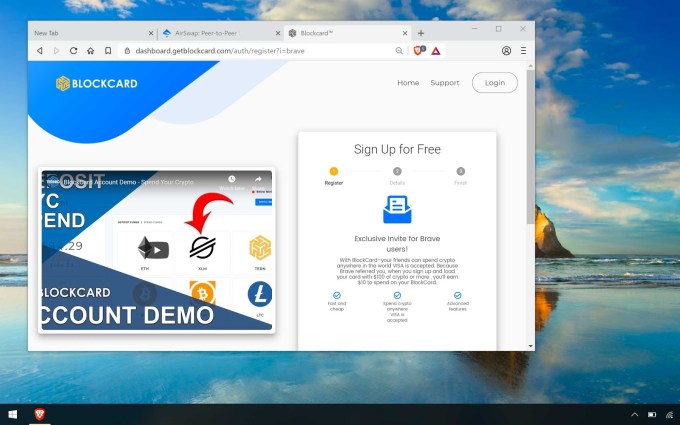
“A lot of users don’t want to cash out [when they receive BAT],” he added. “It’s not a huge amount of value for most people, so they may prefer to just use it to give back. And that’s the real idea: A browser with the user steering it is replacing the ad tech complex.”
The ads are also supposed to protect user privacy. There is a degree of targeting, but Eich said all the data and “decision-making” happens on the device, so Brave and the advertiser never get access to it. (Brave does aggregate anonymized, high-level data so that advertisers can see who viewed their campaigns.)
The ads appear in the browser and don’t replace a previously blocked ad. Brave says the ads are coming from partners like Vice, Home Chef, ConsenSys, Ternio BlockCard, MyCrypto and eToro.
The company also has plans to work with publishers that want to run ads when their site is viewed on the browser, with the revenue then split between Brave, the publisher and the user.
Powered by WPeMatico
Huawei’s P30 Pro excels on the camera front
It’s been a month since Huawei unveiled its latest flagship device — the Huawei P30 Pro. I’ve played with the P30 and P30 Pro for a few weeks and I’ve been impressed with the camera system.
The P30 Pro is the successor to the P20 Pro and features improvements across the board. It could have been a truly remarkable phone, but some issues still hold it back compared to more traditional Android phones, such as the Google Pixel 3 or OnePlus 6T.
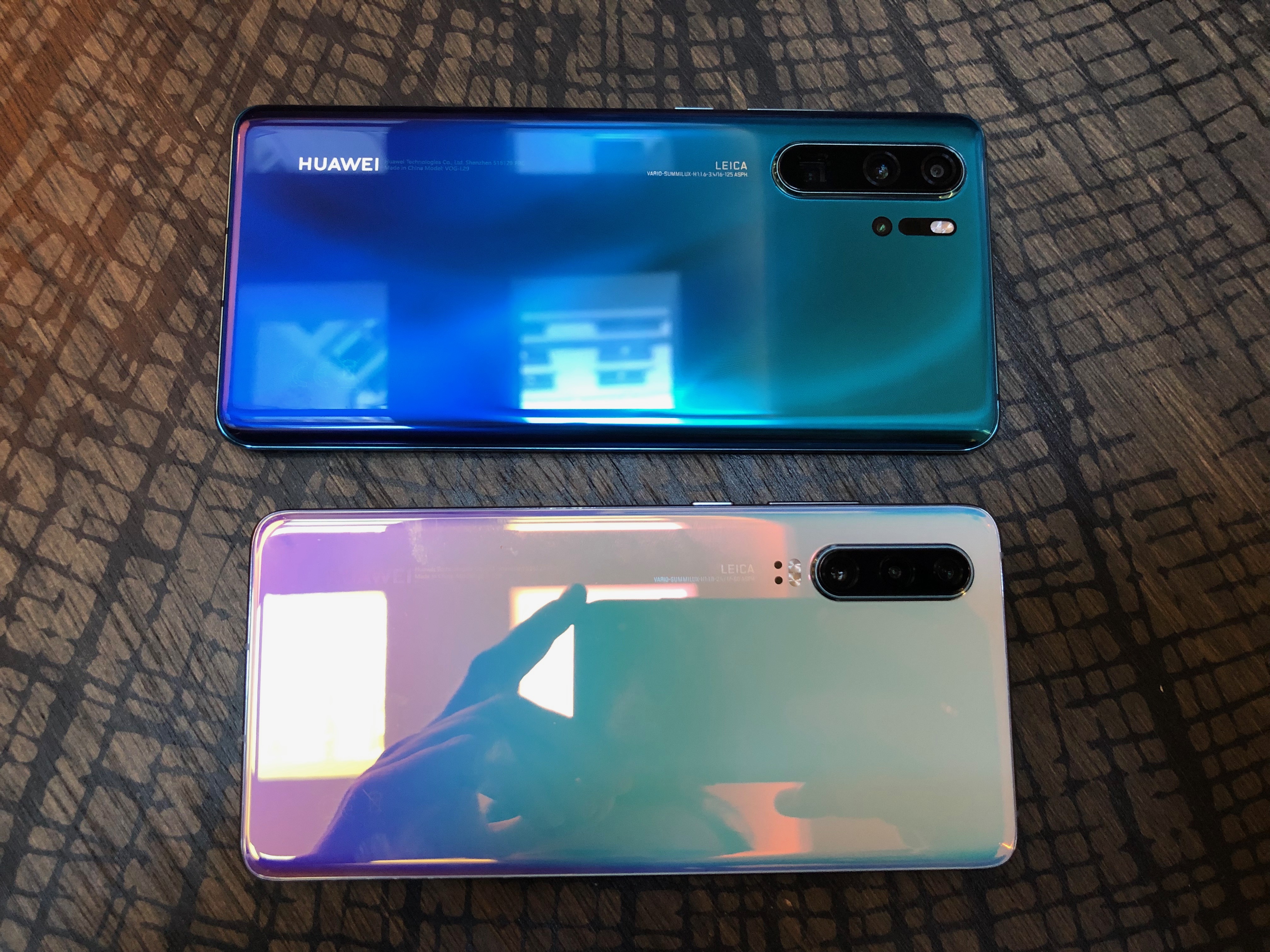
A flagship device
The P30 Pro is by far the most premium device in the P line. It features a gigantic 6.47-inch OLED display, a small teardrop notch near the top, an integrated fingerprint sensor in the display and a lot of cameras.
Before diving into the camera system, let’s talk about the overall feel of the device. Compared to last year’s P20 Pro, the company removed the fingerprint sensor at the bottom of the screen and made the notch smaller. The fingerprint sensor doesn’t perform as well as a dedicated fingerprint sensor, but it gets the job done.
It has become hard to differentiate smartphones based on design as it looks a lot like the OnePlus 6T or the Samsung Galaxy S10. The display features a 19.5:9 aspect ratio with a 2340×1080 resolution, and it is curved around the edges.
The result is a phone with gentle curves. The industrial design is less angular, even though the top and bottom edges of the device have been flattened. Huawei uses an aluminum frame and a glass with colorful gradients on the back of the device.
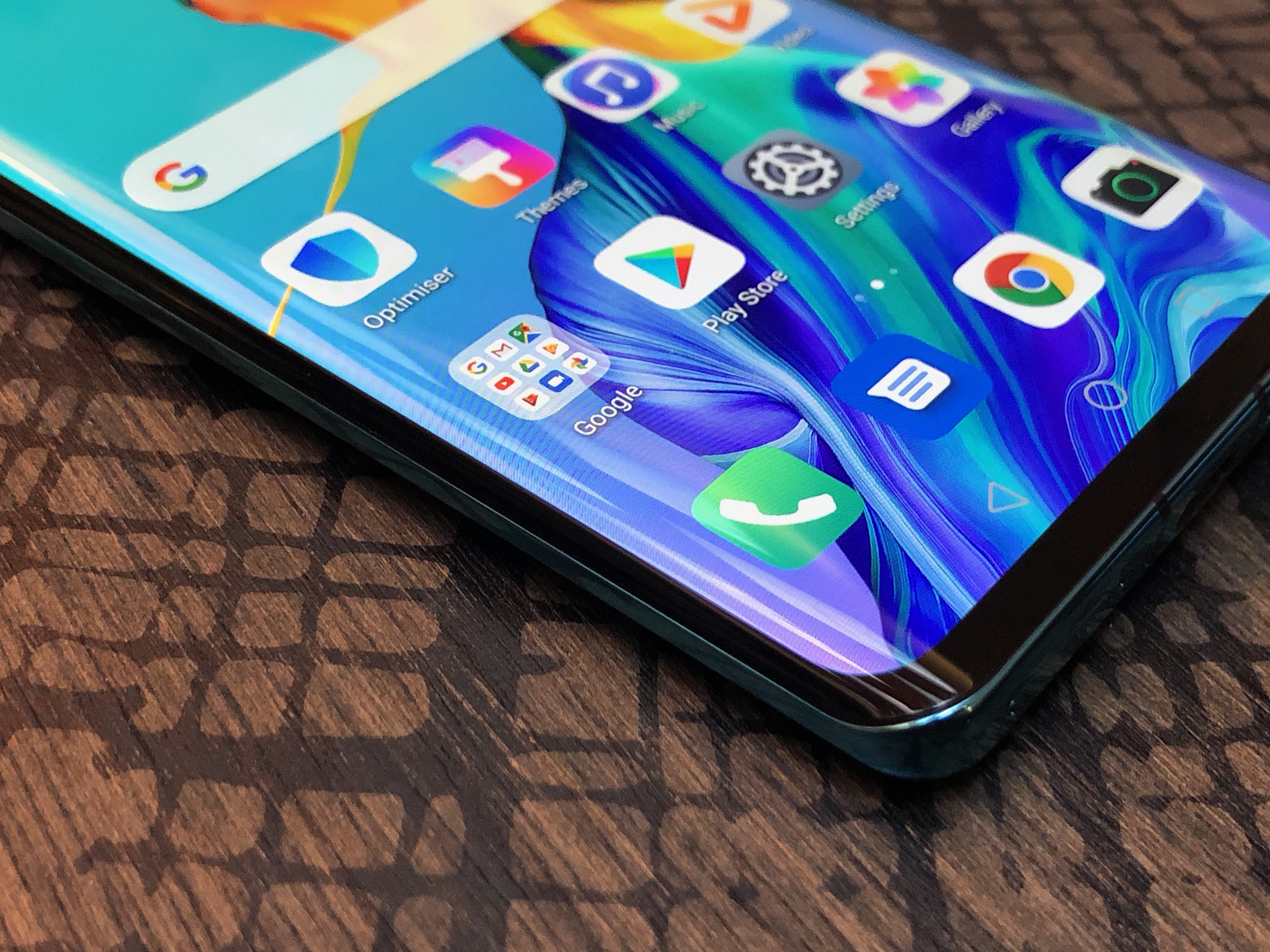
Unfortunately, the curved display doesn’t work so well in practice. If you open an app with a unified white background, such as Gmail, you can see some odd-looking shadows near the edges.
Below the surface, the P30 Pro uses a Kirin 980 system-on-a-chip. Huawei’s homemade chip performs well. To be honest, smartphones have been performing well for a few years now. It’s hard to complain about performance anymore.
The phone features a headphone jack, a 40W USB-C charging port and an impressive 4,200 mAh battery. For the first time, Huawei added wireless charging to the P series (up to 15W).
You can also charge another phone or an accessory with reverse wireless charging, just like on the Samsung Galaxy S10. Unfortunately, you have to manually activate the feature in the settings every time you want to use it.
Huawei has also removed the speaker grill at the top of the display. The company now vibrates the screen in order to turn the screen into a tiny speaker for your calls. In my experience, it works well.
While the phone ships with Android Pie, Huawei still puts a lot of software customization with its EMUI user interface. There are a dozen useless Huawei apps that probably make sense in China, but don’t necessarily need to be there if you use Google apps.
For instance, the HiCare app keeps sending me notifications. The onboarding process is also quite confusing as some screens refer to Huawei features while others refer to standard Android features. It definitely won’t be a good experience for non tech-savvy people.

(P30 Pro on the left, P30 on the right)
Four cameras to rule them all
The P20 Pro already had some great camera sensors and paved the way for night photos in recent Android devices. The P30 Pro camera system can be summed up in two words — more and better.
The P30 Pro now features not one, not two, not three but f-o-u-r sensors on the back of the device.
- The main camera is a 40 MP 27mm sensor with an f/1.6 aperture and optical image stabilization.
- There’s a 20 MP ultra-wide angle lens (16mm) with an f/2.2 aperture.
- The 8 MP telephoto lens provides nearly 5x optical zoom compared to the main lens (125mm) with an f/3.4 aperture and optical image stabilization.
- There’s a new time-of-flight sensor below the flash of the P30 Pro. The phone projects infrared light and captures the reflection with this new sensor.
It has become a sort of a meme already — yes, the zoom works incredibly well on the P30 Pro. In addition to packing a lot of megapixels in the main sensor, the company added a telephoto lens with a periscope design. The sensor features a mirror to beam the light at a right angle and put more layers of glass in the sensor without making the phone too thick.
The company also combines the main camera sensor with the telephoto sensor to let you capture photos with a 10x zoom with a hybrid digital-optical zoom.
Here’s a photo series with the wide angle lens, the normal lens, a 5x zoom and a 10x zoom:


And it works incredibly well in daylight. Unfortunately, you won’t be able to use the telephoto lens at night as it doesn’t perform as well as the main camera.
In addition to hardware improvements, Huawei has also worked on the algorithms that process your shots. Night mode performs incredibly well. You just have to hold your phone for 8 seconds so that it can capture as much light as possible. Here’s what it looks like in a completely dark room vs. an iPhone X:

Huawei has also improved HDR processing and portrait photos. That new time-of-flight sensor works well when it comes to distinguishing a face from the background for instance.

Once again, Huawei is a bit too heavy-handed with post-processing. If you use your camera with the Master AI setting, colors are too saturated. The grass appears much greener than it is in reality. Skin smoothing with the selfie camera still feels weird too. The phone also aggressively smoothes surfaces on dark shots.

When you pick a smartphone brand, you also pick a certain photography style. I’m not a fan of saturated photos, so Huawei’s bias toward unnatural colors doesn’t work in my favor.
But if you like extremely vivid shots with insanely good sensors the P30 Pro is for you. That array of lenses opens up a lot of possibilities and gives you more flexibility.
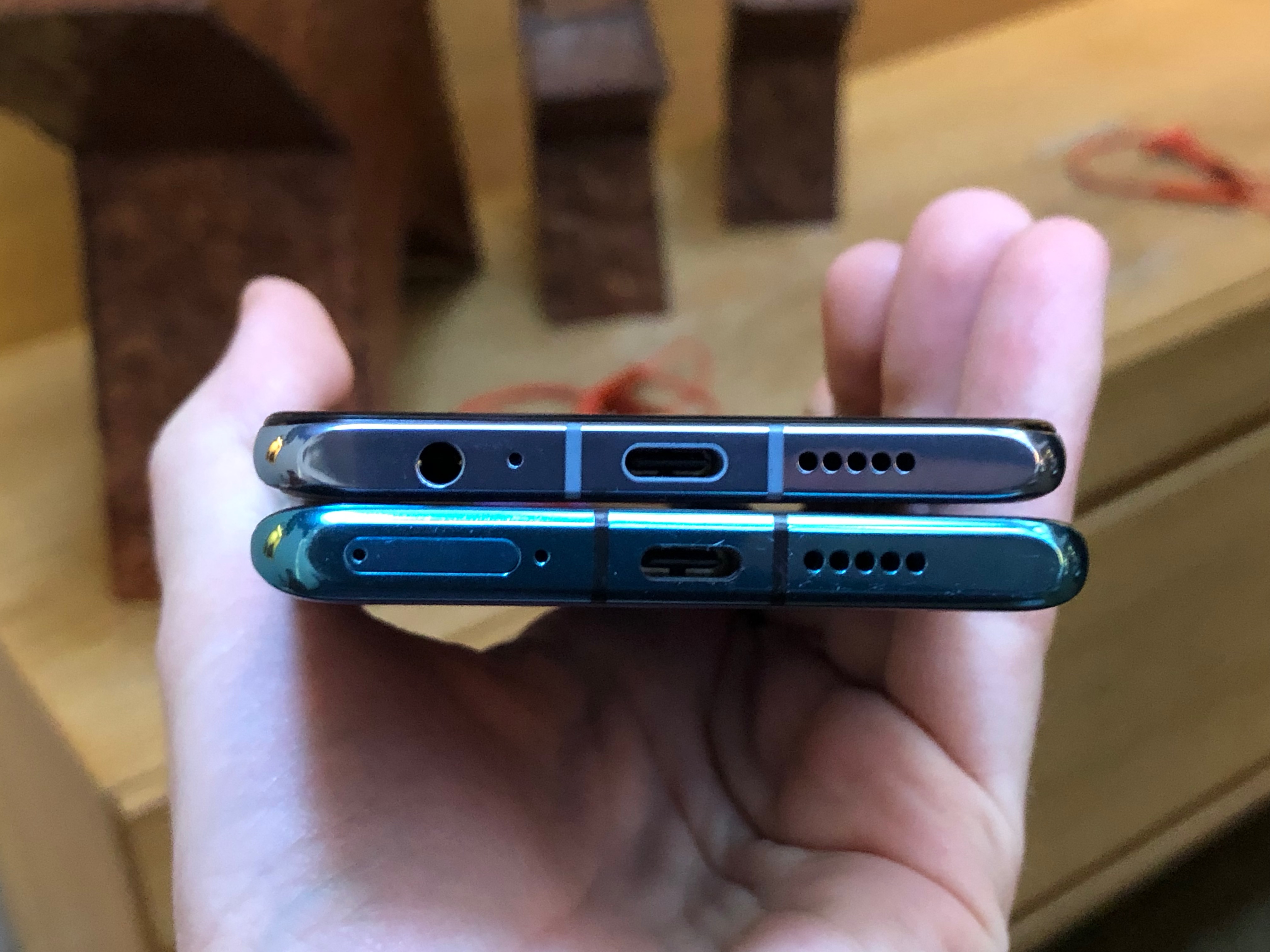
Fine prints
The P30 Pro isn’t available in the U.S. But the company has already covered the streets of major European cities with P30 Pro ads. It costs €999 ($1,130) for 128GB of storage — there are more expensive options with more storage.
Huawei also unveiled a smaller device — the P30. It’s always interesting to look at the compromises of the more affordable model.
On that front, there’s a lot to like about the P30. For €799 ($900) with 128GB, you get a solid phone. It has a 6.1-inch OLED display and shares a lot of specifications with its bigger version.
The P30 features the same system-on-a-chip, the same teardrop notch, the same fingerprint sensor in the display, the same screen resolution. Surprisingly, the P30 Pro doesn’t have a headphone jack while the P30 has one.
There are some things you won’t find on the P30, such as wireless charging or the curved display. While the edges of the device are slightly curved, the display itself is completely flat. And I think it looks better.
Cameras are slightly worse on the P30, and you won’t be able to zoom in as aggressively. Here’s the full rundown:
- A 40 MP main sensor with an f/1.8 aperture and optical image stabilization.
- A 16 MP ultra-wide angle lens with an f/2.2 aperture.
- An 8 MP telephoto lens that should provide 3x optical zoom.
- No time-of-flight sensor.
In the end, it really depends on what you’re looking for. The P30 Pro definitely has the best cameras of the P series. But the P30 is also an attractive phone for those looking for a smaller device.
Huawei has once again pushed the limits of what you can pack in a smartphone when it comes to cameras. While iOS and Android are more mature than ever, it’s fascinating to see that hardware improvements are not slowing down.

Powered by WPeMatico
Samsung Galaxy Fold teardown reveals ‘alarmingly fragile’ display
While Samsung performs its own internal investigations, the folks at iFixit had plenty to say about the Galaxy Fold in their own teardown. The write-up is a bit of a roller coaster ride, admiring the “ambitious first-generation device,” while noting some clear flaws in the way the foldable was put together.
There’s a full 19-step breakdown of the product that adheres to the site’s customarily thorough breakdown, but the key takeaway here is the “alarmingly fragile” display mechanism. “Alarmingly” isn’t the kind of word you see tossed around lightly on a site like iFixit .
“Initial findings from the inspection of reported issues on the display showed that they could be associated with impact on the top and bottom exposed areas of the hinge,” Samsung wrote on Monday when it officially pushed back the Fold’s release to an undisclosed date. That certainly appears to confirm the relatively fragile nature.
And iFixit did the unthinkable, pealing back the protective display, which has been mistaken for the user-replaceable adhesive plastic Samsung’s other devices ship with. As expected, it didn’t go great. “In all known cases (including ours!), removing this layer kills the display,” the site writes. “The display could technically function without the layer, but it is so tightly adhered and the display is so fragile that it’s difficult to remove without applying display-breaking pressure.”
The site was suitably impressed with the hinge mechanism, but notes that “large gaps around the spine let dirt right in, possibly getting trapped between hinge and display.” That’s in line with one of the two points in Samsung’s own reporting of “an instance where substances found inside the device affected the display performance.”
The teardown appears to confirm fears that the issues could ultimately be broader than a few defective review units. Hopefully Samsung will push things back enough to properly address the above issues.
Powered by WPeMatico
Mint founder Aaron Patzer launches Vital, an ER management tool that integrates with electronic health records
Aaron Patzer launched Mint to help consumers organize their finances. Now he’s raised $5.2 million from investors to launch Vital to bring that consumer-focused mindset to emergency rooms and hospitals to help them organize patient flow.
Patzer co-founded the company with his brother-in-law Justin Schrager, a doctor of emergency medicine at Emory University Hospital. The serial entrepreneur invested a million dollars and two years of peer-reviewed academic study and technical research and development to create Vital, according to a company statement.
Investors in the seed round include First Round Capital and DFJ, Bragiel Brothers, Meridian Street Capital, Refactor Capital and SV Angel. Alongside angel investors Vivek Garipalli, the chief executive of CloverHealth and Nat Turner and Zach Weinberg, the founders of Flatiron Health, these investors are hoping that Patzer can repeat in the healthcare industry the magic he brought to financial services.
“The HITECH* Act was well-intentioned, but now hospitals rely on outdated, slow, and inefficient software – and nowhere is it more painful than in the emergency room,” said Patzer, in a statement. “Doctors and nurses often put more time into paperwork and data entry than patient care. Vital uses smart, easy tech to reverse that, cutting wait times in half, reducing provider burnout and saving hospitals millions of dollars.”
Vital isn’t so much replacing the current system of electronic health records as providing a software integration layer that makes those systems easier to use, according to the company.
It’s basically a two-sided application with a survey for incoming patients. An admitting nurse begins the record and as a next step a patient receives a text to add details like height, weight, recent surgeries, medications and allergies, just as they would on a paper form. Patients can also submit a photo of themselves and their insurance card to expedite the process.
The information is then fed back into a tracking board that doctors and nurses use to prioritize care. A triage nurse then reviews the data and affirms that it is correct by taking vital signs and assessing patients.
All of that data is fed into an algorithm that analyzes the available information to predict a course of treatment and help staff in the emergency room prioritize who needs care first.
Vital’s selling the service to emergency rooms with a starting sticker price of $10,000 per month.
“Vital successfully built software with a modern, no-training-required interface, while also meeting HIPAA compliance. It’s what people expect from consumer software, but rarely see in healthcare,” says First Round investor Josh Kopelman, who’s taking a seat on the company’s board of directors. “Turning massive amounts of complex and regulated data into clean, easy products is what Mint.com did for money, and we’re proud to back a solution that’ll do the same in life and death situations.”
In some ways, Vital looks like the patient-facing admissions side of a coin that companies like Qventus have raised tens of millions of dollars to solve at the systems level.
Powered by WPeMatico
Google Fit comes to iOS
Google today announced that Google Fit, the company’s fitness tracking app that launched on Android back in 2014, is now available on iOS.
It definitely took Google a while to bring the app to iOS. Until today, the only way to get your Fit data on your iPhone was in a special section of the Wear OS app on the iPhone. Without a Wear OS device, though, that section would’ve been empty.
If you’ve seen the Fit app on Android, then the iOS version will look very familiar. It features the same focus on Move Minutes and Heart Point, as well as the ability to pick up different activities based on your movement. You can also connect the app with apps connected to Apple Health like Sleep Cycle, Nike Run Club or Headspace can also sync with Google Fit.
Indeed, as a Google spokesperson told me, all of the movement data in the app also comes from Apple’s Health app — or from a Wear OS smartwatch, though few iOS users have opted to cross streams and use a Wear OS watch with their iPhones.
Since Apple Health already tracks your movement data, I’m not sure all that many iOS users will make the switch to Google Fit. It’s still good to see Google bring its service to this competing platform for those who maybe use multiple devices
Powered by WPeMatico
Managed by Q launches a new task management feature for office managers
Managed by Q, the office management platform recently acquired by WeWork, has today announced the launch of Task Management.
The feature comes to Managed by Q by way of Hivy, a startup acquired by MBQ back in 2017, that focuses on connecting a company’s employees to the office manager that handles their requests.
Pre-Hivy, collecting requests and tracking projects across a large number of employees was a tedious, fragmented process. Hivy created a dashboard that organizes all those requests in a single place.
Since the acquisition, Managed by Q and Hivy have been working to integrate their respective platforms. Where Managed by Q connects office managers to the right vendor or MBQ operator to handle the job, the new Task Management system will connect office managers with the employees making the requests in the first place, essentially putting the entire pipeline in a single place.
Obviously, the path to full integration was a long one.
“What I think matters most,” said Hivy co-founder Pauline Tordeur, speaking about the process of intertwining two separate products, “is that we knew why we were doing this and what the future would look like when we integrate. Having this vision and outlook from the very beginning is important.”
The timing is interesting in that this is the first product announcement Managed by Q has made since it was acquired by WeWork.
“It’s hard to describe the feeling,” said Managed by Q co-founder and CEO Dan Teran of being acquired by The We Company. “There is a perception of WeWork from the outside, but since I’ve been spending a lot of time getting to learn the business firsthand, I think there is just so much potential.”
He noted that Managed by Q is indeed setting out to integrate with WeWork in a way that’s similar to the process Q just finished with Hivy.
“We set out to build the operating system for space, and one of the biggest things we missed is the space itself,” said Teran. “That’s actually the hardest part for most people. So now that becomes another ingredient we can deliver to our customers.”
Powered by WPeMatico
Docker developers can now build Arm containers on their desktops
Docker and Arm today announced a major new partnership that will see the two companies collaborate in bringing improved support for the Arm platform to Docker’s tools.
The main idea here is to make it easy for Docker developers to build their applications for the Arm platform right from their x86 desktops and then deploy them to the cloud (including the Arm-based AWS EC2 A1 instances), edge and IoT devices. Developers will be able to build their containers for Arm just like they do today, without the need for any cross-compilation.
This new capability, which will work for applications written in JavaScript/Node.js, Python, Java, C++, Ruby, .NET core, Go, Rust and PHP, will become available as a tech preview next week, when Docker hosts its annual North American developer conference in San Francisco.
Typically, developers would have to build the containers they want to run on the Arm platform on an Arm-based server. With this system, which is the first result of this new partnership, Docker essentially emulates an Arm chip on the PC for building these images.
“Overnight, the 2 million Docker developers that are out there can use the Docker commands they already know and become Arm developers,” Docker EVP of Strategic Alliances David Messina told me. “Docker, just like we’ve done many times over, has simplified and streamlined processes and made them simpler and accessible to developers. And in this case, we’re making x86 developers on their laptops Arm developers overnight.”
Given that cloud-based Arm servers like Amazon’s A1 instances are often significantly cheaper than x86 machines, users can achieve some immediate cost benefits by using this new system and running their containers on Arm.
For Docker, this partnership opens up new opportunities, especially in areas where Arm chips are already strong, including edge and IoT scenarios. Arm, similarly, is interested in strengthening its developer ecosystem by making it easier to develop for its platform. The easier it is to build apps for the platform, the more likely developers are to then run them on servers that feature chips from Arm’s partners.
“Arm’s perspective on the infrastructure really spans all the way from the endpoint, all the way through the edge to the cloud data center, because we are one of the few companies that have a presence all the way through that entire path,” Mohamed Awad, Arm’s VP of Marketing, Infrastructure Line of Business, said. “It’s that perspective that drove us to make sure that we engage Docker in a meaningful way and have a meaningful relationship with them. We are seeing compute and the infrastructure sort of transforming itself right now from the old model of centralized compute, general purpose architecture, to a more distributed and more heterogeneous compute system.”
Developers, however, Awad rightly noted, don’t want to have to deal with this complexity, yet they also increasingly need to ensure that their applications run on a wide variety of platforms and that they can move them around as needed. “For us, this is about enabling developers and freeing them from lock-in on any particular area and allowing them to choose the right compute for the right job that is the most efficient for them,” Awad said.
Messina noted that the promise of Docker has long been to remove the dependence of applications from the infrastructure on which they run. Adding Arm support simply extends this promise to an additional platform. He also stressed that the work on this was driven by the company’s enterprise customers. These are the users who have already set up their systems for cloud-native development with Docker’s tools — at least for their x86 development. Those customers are now looking at developing for their edge devices, too, and that often means developing for Arm-based devices.
Awad and Messina both stressed that developers really don’t have to learn anything new to make this work. All of the usual Docker commands will just work.
Powered by WPeMatico
Embrace raises $4.5M for its mobile application performance management platform
Embrace, an LA-based startup that offers a mobile-first application performance management platform, today announced that it has raised a $4.5 million funding round led by Pritzker Group Venture Capital. This brings the company’s total funding to $7 million. New investors Greycroft, Miramar Ventures and Vy Captial also participated in this round, as did previous investors Eniac Ventures, The Chernin Group, Techstars Ventures, Tikhon Bernstam of Parse and others.
Current Embrace customers include the likes of Home Depot, Headspace, OkCupid, Boxed, Thrive Market and TuneIn. These companies use the service to get a better view of how their apps perform on their users’ devices.
As Embrace CEO and co-founder Eric Futoran, who also co-founded entertainment company Scopely, argues, too many similar services mostly focus on crashes, yet those only constitute a small number of the actual user experience issues in most apps. “To a large extent, crashes are solved,” he told me. “The crash percentages are often 99.8 percent crash-free and yet users are still complaining.”
That’s because there are plenty of other issues beyond code exceptions, which many tools focus on almost exclusively, that can force an app to close (think memory issues or the OS shutting down the app because it uses too many CPU cycles). “To users, that looks like a crash. Your app closed. But in no way, that’s a crash from a technical perspective,” Futoran noted.
Raising this new round, Futoran told me, was pretty easy. Indeed, Pritzker approached the company. “It was not fundraising,” he said. “They sat us down and said, ‘we want to fund you guys,’ which I find pretty unusual. So I’ve been calling it a pre-emptive round.” He also noted that having Pritzker involved should help open up the mid-west market for Embrace, which is mostly focusing on enterprise customers (though Futoran’s definition of “enterprise” includes the likes of digital-first companies like Headspace).
“We saw many organizations trust Embrace’s seamless and innovative optimization platform to quickly identify and resolve any user-impacting issues within their apps, and we’re optimistic about the future of the company in this growing market,” said Gabe Greenbaum, an LA-based partner for Pritzker Group Venture Capital. “We look forward to this next stage in the company’s growth journey and are honored to partner with Eric and Fredric to help them achieve their vision.”
The company plans to use the new funding to increase its go-to-market capabilities, and grow its team to build out its technology.
Powered by WPeMatico


